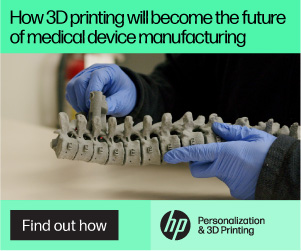 The outermost layer of the eye, the cornea, is very important in terms of focusing vision, as it allows us to see while light passes through to the retina. But with 10 million people around the world needing surgery that can prevent corneal blindness resulting from diseases and infectious disorders like trachoma, and nearly 5 million who are already suffering from total blindness due to corneal scarring from abrasions, burns, and lacerations, there just aren’t enough corneas to go around for transplant patients. 3D printed corneas, made from human stem cells, seem to be the best way to fix this problem, and a research team from Newcastle University in the UK has managed to do just that.
The outermost layer of the eye, the cornea, is very important in terms of focusing vision, as it allows us to see while light passes through to the retina. But with 10 million people around the world needing surgery that can prevent corneal blindness resulting from diseases and infectious disorders like trachoma, and nearly 5 million who are already suffering from total blindness due to corneal scarring from abrasions, burns, and lacerations, there just aren’t enough corneas to go around for transplant patients. 3D printed corneas, made from human stem cells, seem to be the best way to fix this problem, and a research team from Newcastle University in the UK has managed to do just that.
The Newcastle researchers – Abigail Isaacson, a visiting researcher from the Institute of Genetic Medicine; Dr. Stephen Swioklo; and Che J. Connon, Professor of Tissue Engineering – have 3D printed the first human corneas, and published their proof of concept research in a paper, titled “3D Bioprinting of a Corneal Stroma Equivalent,” in the journal Experimental Eye Research this month.
The abstract reads, “Corneal transplantation constitutes one of the leading treatments for severe cases of loss of corneal function. Due to its limitations, a concerted effort has been made by tissue engineers to produce functional, synthetic corneal prostheses as an alternative recourse. However, successful translation of these therapies into the clinic has not yet been accomplished. 3D bioprinting is an emerging technology that can be harnessed for the fabrication of biological tissue for clinical applications. We applied this to the area of corneal tissue engineering in order to fabricate corneal structures that resembled the structure of the native human corneal stroma using an existing 3D digital human corneal model and a suitable support structure. These were 3D bioprinted from an in-house collagen-based bio-ink containing encapsulated corneal keratocytes. Keratocytes exhibited high cell viability both at day 1 post-printing (>90%) and at day 7 (83%). We established 3D bio-printing to be a feasible method by which artificial corneal structures can be engineered.”
The team mixed stem cells (human corneal stromal cells) from a healthy donor cornea with collagen and alginate to create a 3D printable bioink, which was able to be 3D printed in concentric circles, in less than 10 minutes, to form a human cornea shape.
“Many teams across the world have been chasing the ideal bio-ink to make this process feasible,” said Professor Connon, the team leader.
“Our unique gel – a combination of alginate and collagen – keeps the stem cells alive whilst producing a material which is stiff enough to hold its shape but soft enough to be squeezed out the nozzle of a 3D printer.
“This builds upon our previous work in which we kept cells alive for weeks at room temperature within a similar hydrogel. Now we have a ready to use bio-ink containing stem cells allowing users to start printing tissues without having to worry about growing the cells separately.”
It appears that this stem cell bioink was 3D printed on the Inkredible 3D printer by CELLINK, which is known as the first bioprinter with clean chamber technology. The Inkredible is priced as low as $5,000, and uses a pneumatic extrusion system to ensure that cells remain viable.
Once the bioink was successfully 3D printed in the shape of a cornea, the research shows that the stem cells were able to grow, or culture, around this scaffolding. This means that the innovative method could someday be used to guarantee an unlimited supply of 3D printed corneas.
 In addition, the Newcastle research team also showed that they could 3D print a cornea that would match the unique specifications from a patient.
In addition, the Newcastle research team also showed that they could 3D print a cornea that would match the unique specifications from a patient.
“Our 3D printed corneas will now have to undergo further testing and it will be several years before we could be in the position where we are using them for transplants,” said Professor Connon.
“However, what we have shown is that it is feasible to print corneas using coordinates taken from a patient eye and that this approach has potential to combat the world-wide shortage.”
Dimensions for the 3D printed tissue were taken from a real human cornea. The researchers scanned the patient’s eye, and were then able to use the scan data to quickly 3D print a cornea that matched the shape and size of the patient’s actual cornea.
Discuss this story and other 3D printing topics at 3DPrintBoard.com or share your thoughts in the Facebook comments below.
[Images: Newcastle University]
Subscribe to Our Email Newsletter
Stay up-to-date on all the latest news from the 3D printing industry and receive information and offers from third party vendors.
You May Also Like
3D Printing Unpeeled: New Arkema Material for HP, Saddle and Macro MEMS
A new Arkema material for MJF is said to reduce costs per part by up to 25% and have an 85% reusability ratio. HP 3D HR PA 12 S has been...
3D Printing News Briefs, January 20, 2024: FDM, LPBF, Underwater 3D Printer, Racing, & More
We’re starting off with a process certification in today’s 3D Printing News Briefs, and then moving on to research about solute trapping, laser powder bed fusion, and then moving on...
3D Printing Webinar and Event Roundup: December 3, 2023
We’ve got plenty of events and webinars coming up for you this week! Quickparts is having a Manufacturing Roadshow, America Makes is holding a Member Town Hall, Stratafest makes two...
Formnext 2023 Day Three: Slam Dunk
I’m high—high on trade show. I’ve met numerous new faces and reconnected with old friends, creating an absolutely wonderful atmosphere. The excitement is palpable over several emerging developments. The high...


































